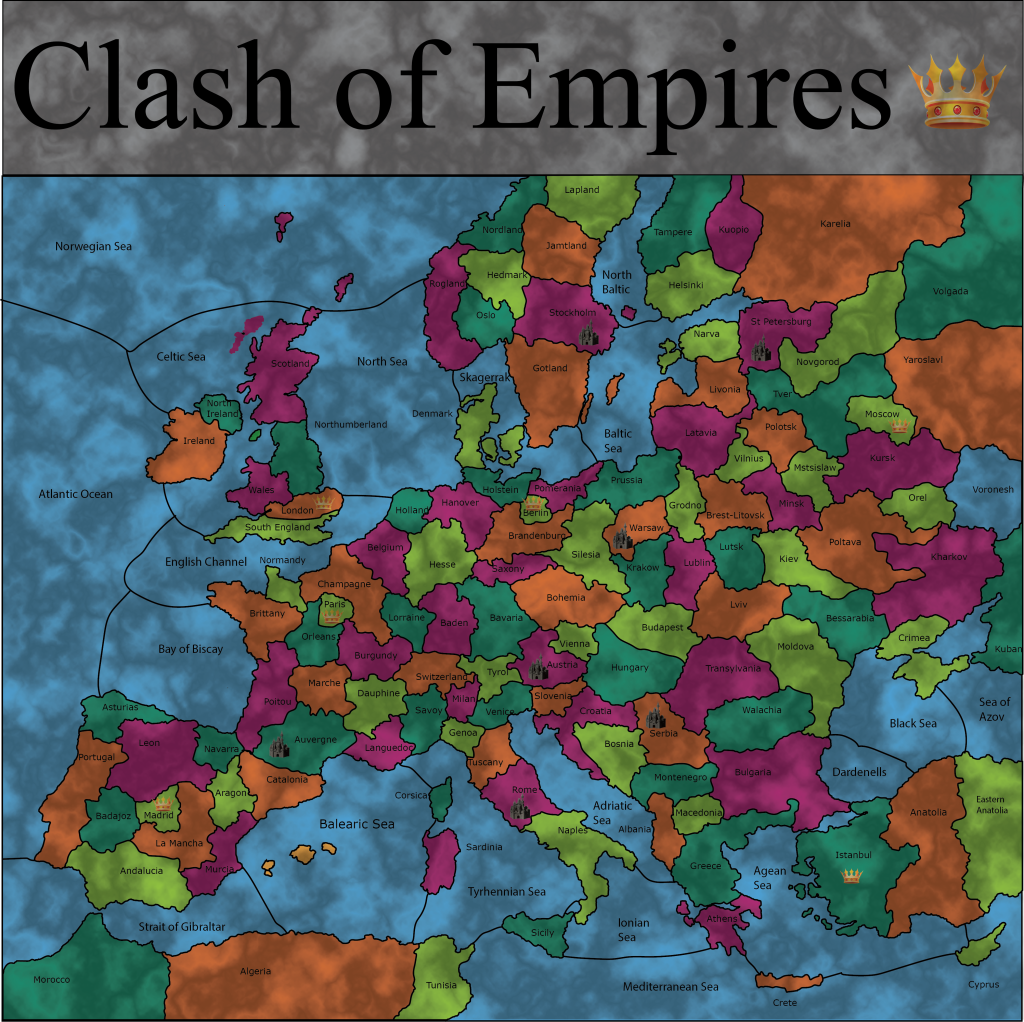Monthly Archives: November 2017
Clash of Empires Morale System
When playtesting Clash of Empires, I noticed that many games end up with one player having an overwhelming advantage in terms of territory or position when the game isn’t close to over.
To fix this, I plan to introduce a morale system to allow players with an early advantage to quickly end the game. There will be a single morale tracker, that will move when a player removes enemy influence. Also a player will gain morale each turn for occupying strategic locations. They win the game if the morale tracker moves enough spaces in their direction. If the game end is triggered before one player wins a morale victory, a player gains points equal to the number of territories controlled plus their position on the morale track.
In addition, the morale system has many other strategic implications. First of all, it is a lot more dangerous for a player to neglect the board early game in favor of improving their deck because the other player will get a morale victory. Second, players will now be more willing to take risks, especially if they are losing in order to quickly win a morale victory. This will make the board more dynamic, and the game will be less likely to devolve into a stalemate near the end.
New Combat System for Clash of Empires
During my playtests of Clash of Empires, I have noticed that the combat system has some major problems and needs a rework. Players have complained that combat is too predictable, and that high value combat cards are overpowered. I have also noticed that attacking is often not worthwhile since combat often ends up in a draw.
With the new combat system, players play 3 cards from their hand instead of one. Each card has a suit and a number, and the winner will be the person who played the most suits. To prevent draws, tiebreakers will be used in the following priority.
- Most numbers in a row.
- Highest total value.
Going for the highest value card early is now a bad strategy, and players should spend more time buying low to mid value cards. Early game, it is best to buy some low value cards to add more suits to your deck since they are easy to get, and some mid level cards because they are good for tiebreakers. High level cards are only good late game to help with having the most numbers in a row and possibly the highest total value.
For the starting deck, a player starts off with 8 combat cards, 2 recruits, 2 attacks, and 8 influence. Each of the combat card has a value of 2, and has be of the same suit. The influence, recruit, and attack cards also have the same suit, but have a value of 0. To start the game off, all the influence goes on the top of the deck and everything else is shuffled. This allows players to build up some influence on the board before actually fighting.
